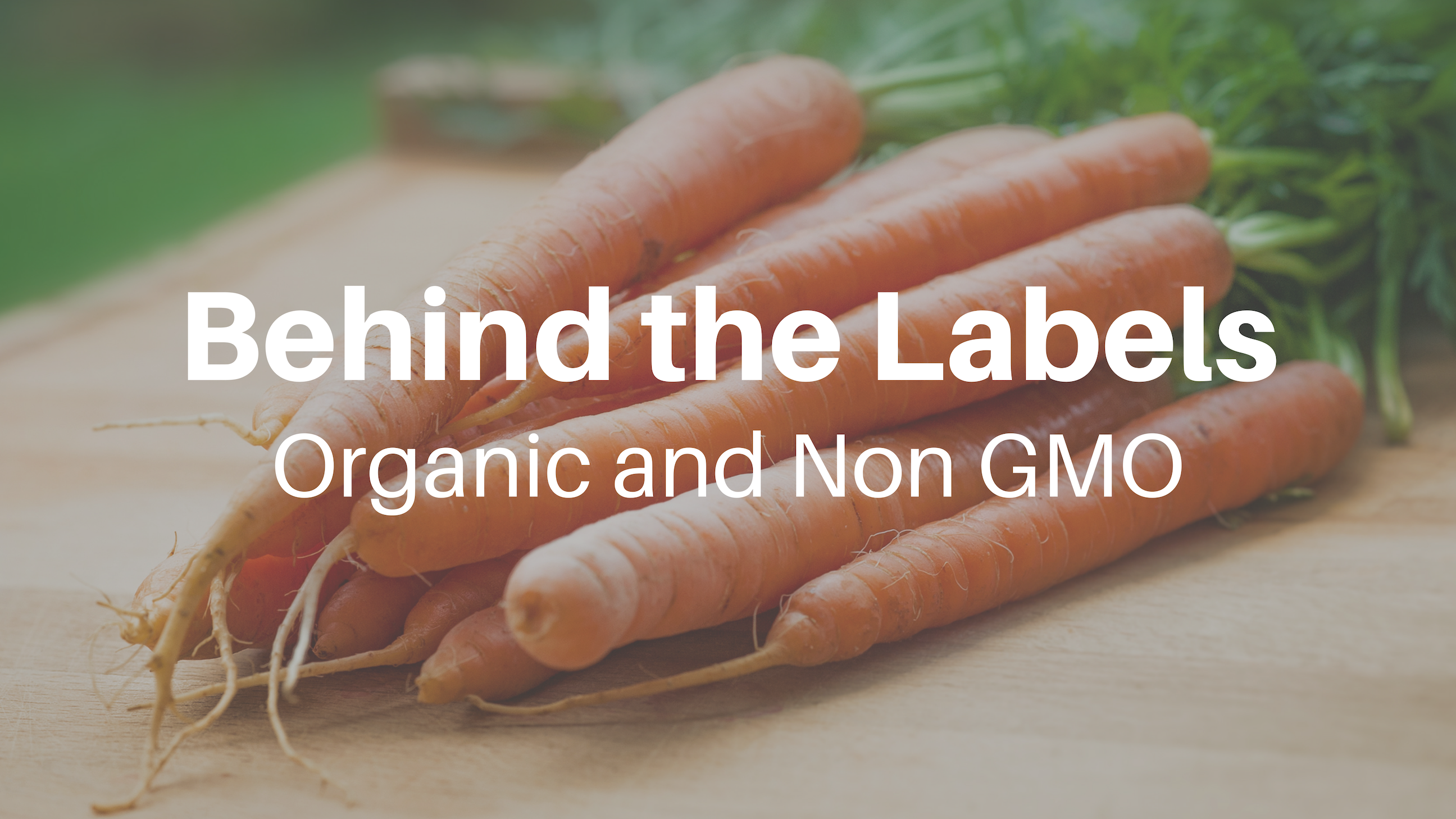Organic vs. non-GMO. Is there a difference? Do we care? Do food labels tell us the full story? To start off, let’s define organic and non-GMO. Organic food is that which has been grown in a way that is either biological, mechanical, or physical using natural substances. That means that there are no chemicals used in the process, and it also means that organic foods are non-GMO, however this is due to the nature of organic production. Non-GMO means that the DNA of the plant has not been altered to produce a desired effect, such as improved color, altered taste, resistance to pesticides, etc.
However, just following these practices doesn’t mean a product automatically receives a spot in the organics aisle or a non-GMO food label. Many farmers who practice organic farming have said being certified organic just isn’t worth the trouble. We’re facing a huge challenge, organic food sales doubled from 2016 to 2017, but the number of organic farms has stayed relatively the same. If the demand is increasing, why isn’t the supply? Part of this is the expensive up front costs of implementing organic farming practices and processes, but beyond that regulations that, the USDA put on crop rotation create risk for farmers who are considering switching to organic.
To speak more on labelling for organic products, it’s an all or nothing deal. You are unable to have your product labelled organic until it has been approved, which can be a lengthy process. Organic farming is more expensive than traditional farming, and without the certification, farmers are unable to sell their products as organic. This leaves farmers in a transitional phase where they practice organic methods, but aren’t getting paid for them, which can lead to heavy financial strain.
On the other hand, non-GMO crops seem to provide hope for farmers who are currently struggling financially. Media has increased consumer fear of GMO corn and soybeans, due to pesticides and publicity surrounding Monsanto. In addition, selling prices of soybeans and corn are often lower than the cost of production, leaving farmers at a loss producing these crops. However, non-GMO crops can provide hope, as it is easier to get certified due to a short time span for approval of a non-GMO production. Non-GMO soybeans can earn $2 a bushel and corn can earn $0.35 a bushel over the market price. This combined with increased consumer demand has made non-GMO a much more desirable direction for farmers to go towards.
In summary, non-GMO and organic crop production is being driven by the market. While there may be hoops to jump through, if the money is there, farmers will jump through them. Should you buy non-GMO or organic products? Well that’s up to you and what you prioritize in your diet. Just because non-GMO products are more prevalent, doesn’t mean that they are worse, just like if a family farm isn’t certified organic it doesn’t mean they don’t practice organic farming. It is up to you to decide what you want to see on the shelves, and use your buying power to influence change in the market.
Go green with Dining Team Green! Want more information on sustainability in dining? Follow us on Facebook, Instagram, and Twitter @ursustainibble. Contact us at urdiningteamgreen@gmail.com. We’d love to hear from you!
Guest Post Written by Phoebe Konecky, Class of 2020, Dining Team Green Sustainability Intern

